Description
HED4805 Assignment 1 Memo | Due 16 May 2025. All questions fully answered. Question 1 The textual piece below is taken from the prescribed textbook: Seroto et al. (2020), “Decolonising education in the Global South: historical and comparative international perspectives”, from Chapter 3: Indigenous history and education before colonial times. Read the extract below, and then answer the questions that follow. Extract from the text: Education through practice The indigenous people of southern Africa developed their own methods of sharing knowledge through teaching practical skills. In most instances teaching was through showing, with different skill sets demonstrated for the younger generation to observe. In Southern Africa, the San people who survived by hunting and food gathering for thousands of years, used Stone Age tools to cut up the animals that they hunted. Even though the San were using Stone Age technology, they were very skilled in killing animals. To hunt they used, among other tools, bows, arrows, snares, and slow poison technologies. The bow and arrow method was used to hunt large game such as antelope, buffalo, or eland. The hunter would stalk the game to within about 20m, which is the average distance an arrow can fly. Instead of killing animals instantly, which was not easy because the arrow had no fletching and often missed the target, the San used poisoned arrows to kill the game. The animal would be poisoned slowly to death, which took a few hours to a few days depending on the size of the animal. The sources of the poison were caterpillars, the larvae of a small beetle, poisonous plants, and snake venom, which were put on the arrow. When the arrow struck an animal, the hunters would have to track it until it died. Once the animal fell, the San would cut around the poisoned area and discard the poisoned meat. The Khoi, just like the San people were also skilled at making weapons. Archaeologists discovered that the San also used snares to capture prey as early as 70 000 years ago (Wadley, 2010). Traps and snares have an economic dimension since they reduce the cost of a long search prey, by bringing the animal to the hunter, rather than requiring that the hunter goes after animal (Wadley, 2010). Since the prey was captured remotely, these devices created the time and space for hunters to engage in other activities that included social activities such as rituals. Among the many ways to trap animals, the San would dig funnel-shaped pits near rivers, place a sharp stake in the middle of the pit and cover it with branches. San hunters were expected to observe and understand their prey’s behaviour before they set a snare. The snare that the San set was designed to function without human agency. These snares and traps have provided evidence that indigenous people could grasp and incorporate action across space 100 marks Assignment 01 Due date: 16 May 2025 Unique assignment number: 149215 20 h and time (Wynn & Coolidge, 2003). Snares are also an apt demonstration of high-level cognition because they operate out-of-sight, but not out-of-mind (Wadley, 2010). This non-formal technology education was passed down from generation to generation. The hunting techniques that the San used had been in existence for centuries and were passed onto the younger generations. These hunter-gatherers were able to mark seasons of the year and knew precisely where the plants they used for food and for medicine grew. They also knew how to collect plants and roots without damaging the environment. An environmental skill that the San had was their ability to follow the migration of antelope herds in order to locate where they could get water, so that they would not go thirsty. The San used bowls for cooking whereas the Khoi used vessels for storing water (Bollong, Smith & Sampson, 1997). Traditionally, the San used empty ostrich shells to store water which they carried as bottles (see Figure 3.3). These bottles were often buried in the sand to keep the water cool. Indigenous people also used personal ornaments made from techniques such as beadwork. The making and use of ostrich eggshell beads were commonplace during the LSA (Late Stone Age) and the MSA (Middle Stone Age). In South Africa, ostrich eggshells, which were also used in beadwork, were discovered in Boomplaas and date back 58 000 years (McBrearty & Brooks, 2000). However, the oldest beads discovered were made from seashells. The Khoi were also experienced in craftwork. Most of their bags, clothing, and blankets were made from animal skins, and they used reeds to make mats for sleeping and for covering their houses. Experienced men and women demonstrated the skills of their craft to inexperienced youth who learnt through observation. Both demonstration and observation are fundamental elements of critical thinking, and they enhance a child’s cognitive skills. Practical skills provided by community elders enhanced indigenous people’s ability to learn independently as they observed, listened, and participated in different activities. Learning through language socialisation A distinct characteristic of education for indigenous people was language socialisation. Language acquisition produces culturally competent members of society and in the process of acquiring language, children learn about cultural practices. Schieffelin and Ochs (1986:163) posit that language socialization, is about socialisation through using language (i.e., learning to speak a language to communicate and mix with others in a society), and about using language to acquire social competence (i.e., learning to use appropriate language within specific/different social contexts). It is through language that a child can construct his/her social world. Language socialisation views thinking as a social, rather than individual psychological phenomenon. Cognition begins at the start of social contact in a child’s life. Learning is conceptualised when a more knowledgeable person is engaged with a novice individual through social interaction (Vygotsky, 1978). Lave and Wenger (1991) explain that language socialisation goes beyond just individual interaction, it extends to the participation of a child within broader communities of practice. It emphasises the importance of children’s involvement in participatory roles in their communities. In brief, language socialisation helps us to understand how learners are socialised into appropriate language usage, as well as how they are socialised through language to engage in community cultural routines, activities, and expectations (Schieffelin & Ochs, 1986). The absence of historical recordings of indigenous people’s literature before colonisation has been one of the greatest challenges to anthropologists, historians, and linguistics. However, one cannot ignore the role that language played in the socialisation of indigenous people. A German HED4805/101/0/2025 21 linguist, WHI Bleek, and his sister-in-law Lucy Lloyd, attempted to document the literature of the San. Although there are disagreements among linguistics and anthropologists about Bleek and Lloyd’s work on the San language (e.g. issues about transcription and the translation into English, and the power relations between the informant and the researcher), a careful study of the Bleek and Lloyd records suggests that language played an important role in socialising indigenous people. Older people enjoyed storytelling proverbs and tales that were interwoven with a sense of social and individual identity. With reference to the text provided, answer the following questions: 1.1 Explain which one of the two hunting methods i.e., the use of bows and arrows, or the use of poisoning do you think was the most effective for the San people. (15) 1.2 Briefly discuss the role of education in the hunting way of life for San and Khoi people, and in their struggle for survival in their indigenous environment. (10) Question 2 (25) Write an essay to critically discuss some of the key foci of “the history of education”. Question 3 (25) Write an essay where you first briefly discuss the modern learning theories of Vygotsky (1978), and of Lave and Wenger (1991). Secondly, analyse how these two theories address or relate to language socialisation. Question 4 (25) Write an essay where you evaluate how the Christian missionaries in South Africa influenced the struggle for political liberation during the colonial period.



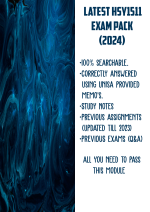


















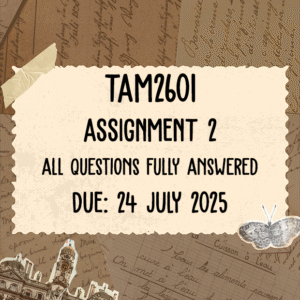






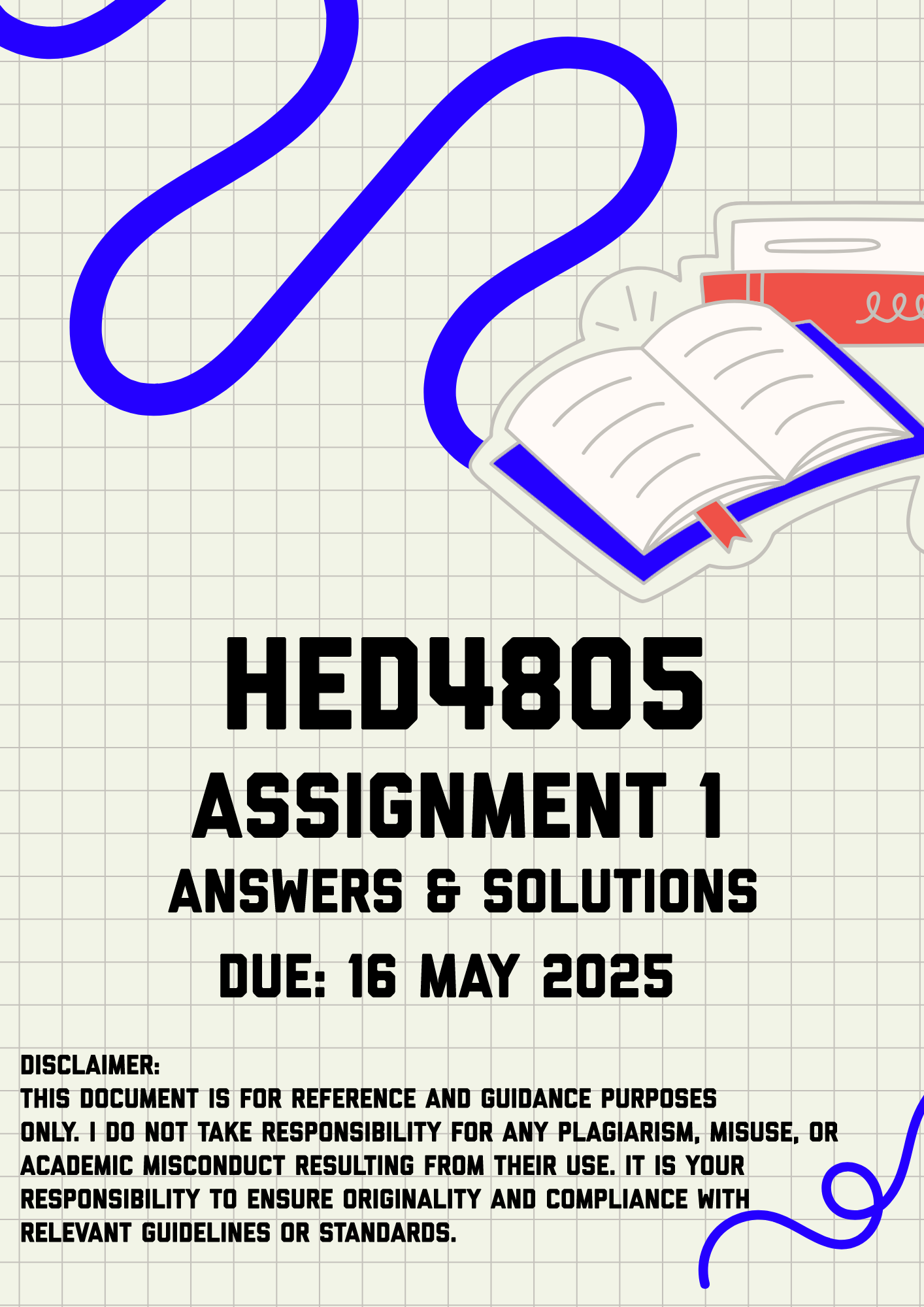





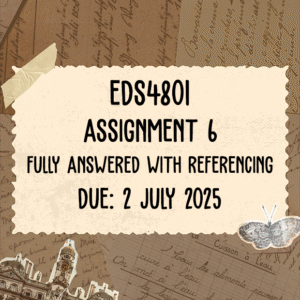
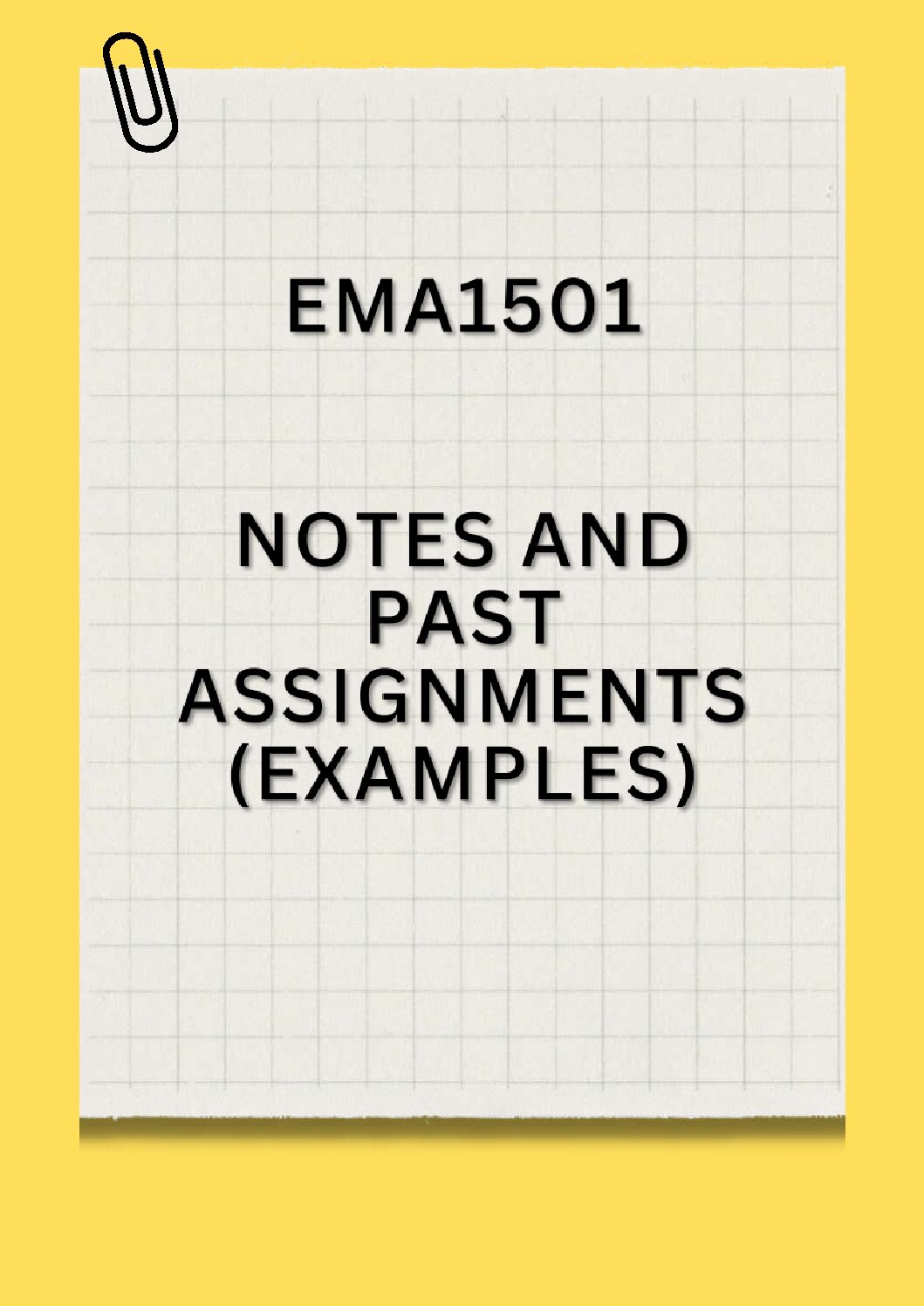



Reviews
There are no reviews yet.